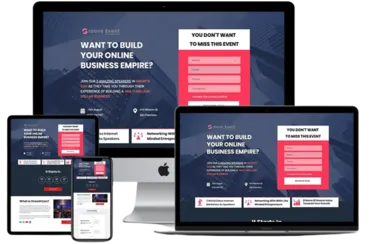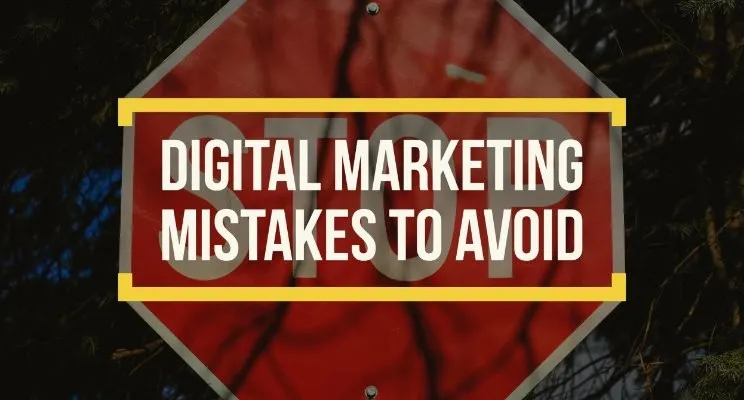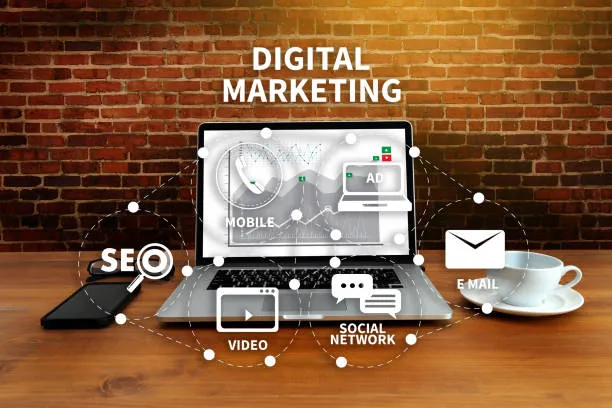5 Simple Steps to Boost your Website Traffic Today
Hello everyone, today I want to share with you 5 simple steps to boost your website traffic. Whether you are a blogger, online business owner or just looking to increase your online presence, these tips will help you increase your website traffic in no time. Let's get started!
Step1: Optimize your website for search engines.
Search engine optimization (SEO) is a critical part of increasing your website traffic. The goal of SEO is to ensure that your website is ranking higher in search engine results pages (SERPs) for keywords related to your business or industry.
When it comes to optimizing your website for search engines, there are several key steps you can take to improve your visibility and attract more organic traffic.
The first step is to conduct thorough keyword research to identify the words and phrases that your target audience is searching for. Use these keywords throughout your website, including in your content, metadata, and URLs, to help search engines understand the relevance and value of your website.
Next, make sure your website is designed with user experience in mind. This means ensuring your website is mobile-friendly, easy to navigate, and visually appealing. A well-designed website not only makes it easier for users to find what they're looking for, but it also signals to search engines that your website is high quality and trustworthy.
Another important aspect of search engine optimization is building high-quality backlinks to your website. Backlinks are links from other websites that point to your website, and they are an important signal to search engines that your website is authoritative and valuable. Focus on building relationships with other websites in your industry and creating high-quality content that other websites will want to link to.
Example 1: A small online store selling handmade jewelry can optimize their website for search engines by researching keywords such as "handmade jewelry," "unique jewelry," or "artisanal jewelry." They can incorporate these keywords in their product descriptions, meta tags, and page titles to increase their website's visibility in search results pages.
Example 2: A food blogger can optimize their website for search engines by researching keywords related to their niche, such as "vegan recipes," "healthy eating," or "meal prep." They can include these keywords in their blog post titles, headings, and content to improve their website's ranking in search engine results pages.
Finally, track your website's performance using analytics tools like Google Analytics to understand how users are finding and interacting with your website. Use this information to continually optimize your website and content to better serve your target audience and improve your search engine rankings. By following these key steps, you can help your website rise to the top of search engine results pages and attract more organic traffic over time.
Step 2: Leverage social media to promote your website.
Social media has become an indispensable tool for businesses to promote their websites and reach out to potential customers. With billions of active users on social media platforms, businesses can leverage social media to increase their website traffic, build brand awareness, and engage with their audience. Here are some ways you can use social media to promote your website:
First, create social media accounts for your business on platforms like Facebook, Twitter, LinkedIn, and Instagram. Make sure your profiles are complete and reflect your brand's personality and values. Use these accounts to share updates about your business, including new content on your website, promotions, and events.
Second, use social media to engage with your audience by responding to comments and messages promptly and thoughtfully. Encourage your followers to share your content with their own followers, and consider running social media contests or giveaways to increase engagement and attract new followers.
Third, create and share valuable content that your audience will find interesting and relevant. This could include blog posts, infographics, videos, and more. Make sure your content is optimized for social media by including eye-catching visuals, attention-grabbing headlines, and social sharing buttons.
Finally, use social media advertising to reach a wider audience and drive more traffic to your website. Platforms like Facebook, Twitter, and LinkedIn offer highly targeted advertising options that allow you to reach specific demographics, interests, and behaviors. By investing in social media advertising, you can increase your website's visibility and attract more qualified leads.
Example 1: A travel blogger can promote their website on social media by sharing their blog posts on Instagram and Facebook, using relevant hashtags such as #travelblogger or #travelphotography to reach a wider audience.
Example 2: A small business owner can promote their website on LinkedIn by sharing blog posts related to their industry and networking with other professionals in their field.
In conclusion, social media offers a powerful way for businesses to promote their websites and connect with their audience. By creating engaging profiles, sharing valuable content, and leveraging social media advertising, you can drive more traffic to your website and build a strong online presence for your business.
Step 3: Guest post on other websites.
Guest posting is a valuable strategy for building your online presence, driving traffic to your website, and establishing yourself as an authority in your industry. By contributing high-quality content to other websites, you can reach a wider audience and build relationships with other bloggers and influencers. Here are some tips for guest posting on other websites:
First, identify websites that align with your niche and have an engaged audience. Look for websites that publish content related to your industry, and make sure their audience matches your target audience. You can use tools like Google search, social media, and industry directories to find potential websites.
Next, reach out to the website owner or editor with a personalized pitch. Explain who you are, why you're interested in guest posting on their website, and what value you can bring to their audience. Make sure your pitch is well-researched and tailored to the website's specific audience and content style.
Once your pitch is accepted, work closely with the website owner or editor to determine the topic and format of your guest post. Make sure your content is high-quality, original, and offers value to the website's audience. Use visuals, data, and examples to make your content more engaging and informative.
Example 1: A fashion blogger can guest post on a popular fashion website by pitching an article idea on the latest fashion trends. In the author bio, they can include a link back to their website to drive traffic.
Example 2: A marketing consultant can guest post on a business website by pitching an article on the benefits of digital marketing. In the article, they can include a link back to their website to showcase their services.
Finally, promote your guest post on social media and other channels to maximize its reach and drive traffic to your website. Encourage your followers to share your post, and engage with readers who leave comments or questions. By leveraging guest posting as part of your overall content marketing strategy, you can build your online presence and establish yourself as a thought leader in your industry.
Step 4: Use email marketing to drive traffic to your website.
Email marketing is a highly effective way to drive traffic to your website and engage with your audience. By leveraging your email list, you can reach out to potential customers, promote your content, and encourage website visits. Here are some tips for using email marketing to drive traffic to your website:
First, build a high-quality email list by collecting email addresses from your website visitors, social media followers, and other sources. Make sure your subscribers have opted-in to receive your emails, and segment your list based on interests and behaviors to deliver more targeted messages.
Next, create valuable and engaging email content that offers value to your subscribers. This could include newsletters, promotional emails, blog post summaries, and more. Use eye-catching subject lines and personalization to increase open rates, and include clear calls to action to encourage clicks to your website.
Third, use email marketing to promote your website's content, such as blog posts, videos, and other resources. Use teaser content in your emails to entice readers to click through to your website, and consider offering exclusive content or promotions to email subscribers to encourage website visits.
Example 1: A beauty brand can use email marketing to drive traffic to their website by sending a weekly newsletter featuring their latest products and promotions. They can include links to their website in each email, encouraging subscribers to click through and make a purchase.
Example 2: An online course creator can use email marketing to drive traffic to their website by sending a series of educational emails related to their course topic. They can include links to their website in each email, inviting subscribers to learn more.
Finally, track your email marketing performance using analytics tools to understand how your subscribers are engaging with your emails and your website. Use this information to optimize your email content and calls to action, and continually experiment with new strategies to drive more website traffic.
In conclusion, email marketing is a powerful tool for driving website traffic and engaging with your audience. By building a high-quality email list, creating valuable email content, promoting your website's content, and tracking your performance, you can leverage email marketing to attract more visitors to your website and grow your business.
Step 5: Collaborate with other businesses or websites.
Collaborating with other businesses or websites can be a valuable way to expand your reach, build relationships, and grow your business. By working with other companies or influencers, you can tap into their audience and share your message with a wider group of potential customers. Here are some tips for collaborating with other businesses or websites:
First, identify potential collaborators who share your values and audience. Look for businesses or websites that complement your offerings and can help you reach a new audience. Consider reaching out to influencers, bloggers, or other thought leaders in your industry who can help you increase your reach and credibility.
Next, establish a clear collaboration goal and plan. Whether it's a joint marketing campaign, a product launch, or a content partnership, make sure both parties have a shared understanding of the collaboration's objectives and timeline. Determine how you will measure success, and make sure both parties are clear on their responsibilities and contributions.
Third, leverage your collaboration to create valuable content and promotions for your audience. This could include joint blog posts, social media campaigns, giveaways, or other co-branded content that benefits both parties. Use your collaboration to offer your audience something unique and valuable that they wouldn't have access to otherwise.
Example 1: A health and wellness blogger can collaborate with a yoga studio to run a joint promotion, such as a free yoga class for blog subscribers. The blogger can promote the collaboration on their website and social media, encouraging their audience to visit the yoga studio's website.
Example 2: A software company can collaborate with a business coach to create a joint content piece, such as an ebook on the benefits of using software for small businesses. The software company can promote the collaboration on their website and social media, driving traffic to the business coach's website.
Finally, track your collaboration's performance and continually optimize your strategy. Use analytics tools to understand how your collaboration is impacting your website traffic, social media engagement, and sales. Use this information to refine your strategy and build on what's working well.
Collaborating with other businesses or websites can be a powerful way to grow your audience and build your business. By identifying the right collaborators, establishing clear goals and plans, creating valuable content and promotions, and tracking your performance, you can leverage collaborations to achieve your business goals and reach new heights.
As has been demonstrated, there are many simple steps you can take to increase your website traffic. By optimizing your website for search engines, leveraging social media, guest posting on other websites, using email marketing, and collaborating with others, you can drive more traffic to your website and grow your online presence. Start implementing these steps today and watch your website traffic grow!
As a website owner, I understand how important it is to have a steady flow of traffic to my site. In my search for ways to boost my website traffic, I came across several methods, but the 5 simple steps that I found to be the most effective were: optimizing my website for search engines, using social media to promote my content, creating valuable content, guest blogging, and utilizing email marketing.
After implementing these steps, I saw an increase in my website traffic, but I was still looking for more ways to improve. That's when I came across GrooveFunnels. It is one of the most popular and best website builders available today. The free lifetime access to its powerful tools caught my attention.
GrooveFunnels Your Trusted All-in-One Solution
Are you ready to take your digital marketing game to the next level? Look no further than GrooveFunnels – the ultimate all-in-one platform designed to empower both beginners and seasoned marketers alike. GrooveFunnels is the ultimate solution to tackle critical mistakes killing your conversions. Whether you're just starting out with a free account or looking to upgrade to advanced features, GrooveFunnels has everything you need to succeed.
- Build High-Converting Funnels: Use intuitive drag-and-drop builders to create sales funnels tailored to your business goals and audience.
- Track Performance: Analyze key metrics and track the performance of your funnels with built-in analytics tools, allowing you to make data-driven decisions and optimizations.
- Automate Marketing Processes: Utilize marketing automation features to set up automated email sequences, segment your audience, and deliver personalized messages at scale.
- Test and Optimize: Conduct A/B tests, analyze results, and make iterative changes to your funnels with ease, ensuring continuous improvement and maximum effectiveness.
- Cost-Effective Solution: GrooveFunnels all-in-one approach provides a cost-effective alternative to purchasing individual marketing tools from multiple vendors. GrooveFunnels also offers a free plan with limited features, making it an attractive option for startups and small businesses looking to kickstart their digital marketing efforts without upfront costs.
Get started for free and unlock basic features. Ready to level up? Upgrade for advanced analytics, split testing, and more. Supercharge your digital marketing and scale your business with GrooveFunnels today!
Do yourself a favor and sign up for your free Groove account right now.























